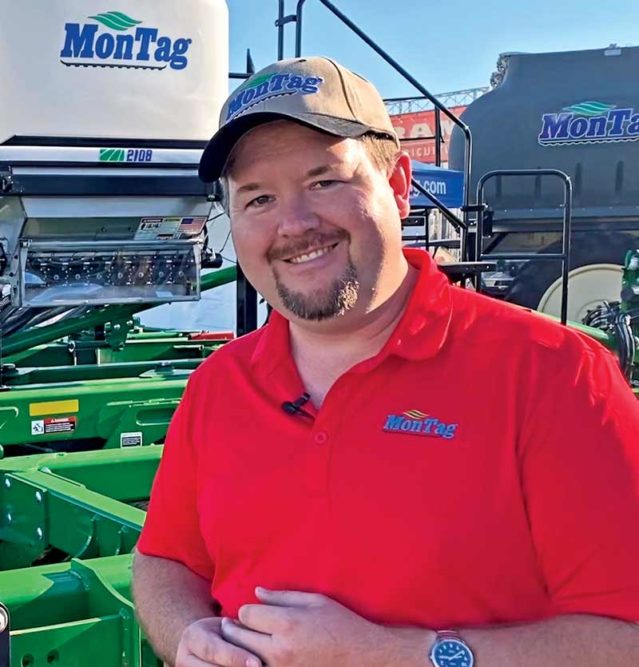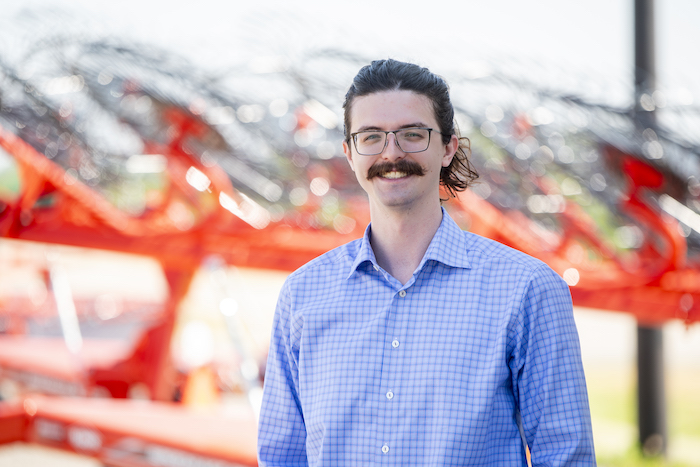Dealer Takeaways
- Component shortages and supply issues will last into 2024.
- Farmers’ future equipment needs will revolve around simplicity and improved profitability.
- Dealers are competing for labor with more industries than before, including your OEMs.
Dealers and manufacturers are facing many of the same issues in the ag equipment industry. Both are impacted by struggling global supply chains and a shrinking and increasingly competitive labor pool.
Anthony Montag, CEO of Montag Manufacturing — a manufacturer of dry fertilizer equipment and steerable carts — sat down with Farm Equipment to explain the manufacturer side of the issues the ag equipment industry is facing. He also gives his views on the future of farmers’ profitability and autonomy and electrification’s role in the ag equipment industry.
How has your company been dealing with supply chain issues?
Montag: Key points of concern have been mainly in the electrical and hydraulic components for our company. Many of the major base components for our machines have stabilized a lot in the last year, but less so those small components, oftentimes deep into the supply chain. Typically it’s not the supplier who’s bringing in the solution directly to Montag, and oftentimes it’s not that supplier’s supplier; it’s the supplier’s supplier’s supplier where the breakdown happens. That’s really hard as a manufacturer to understand that breakdown in a timely manner. That’s been the most challenging, the depth that the supply chain has broken down. That’s forcing us to diversify the supply chain, bring on multiple suppliers or multiple products that can be interchanged, ultimately giving more choices to dealers and farmers from a product offering standpoint.
But that all comes with reduced volumes and more accounts to manage, more depth in the supply chain and more complexity. I’ve been really impressed with our purchasing and operations people for what they’ve had to do to adjust on the fly.
One of the things we’ve implemented is a senior leadership group that meets weekly. We will simply address what those key components are. I myself will sit in the room as well, and we’ll brainstorm through those impacted components that are coming in and try to find a solution. It’s a very fluid world, yet I think that’s been important and helped us. It really is a lot of work to continue to do it.
How long will this last? I think at least 2024. I’m hopeful that we can see continued maturing of the supply chain back to more of an old normal through 2023. We’ve got to plan 18-24 months out, and you have to be committing to your suppliers at a high level. You need to be developing a strategy around how product disruptions are going to be dealt with because they will come. It’s not so much that you can’t manage a 45 week lead time. Nobody likes it, but it’s a very manageable thing. What’s very unmanageable is 12 weeks past due. That’s a disruption that’s difficult.
How has the labor shortage been impacting your business?
Montag: There’s a level of complexity to the labor market, because 3 years ago a gas station paid $12 an hour. Today, a gas station pays $18 an hour as a starting wage. That doesn’t really affect Montag employees, but it affects entry level people who don’t know how to weld, who want to come get a job and learn. All of a sudden learning a set of skills or just showing up at the gas station, pays a similar wage. That’s a challenge to get somebody to engage in the process of learning, when you have to compete with a gas station.
It also has an effect to the supply chain, and affects those suppliers that are bringing you product in. The market’s really hungry for more willing labor who wants to pursue that career. We engage with the local high school and local community college to bring awareness to the opportunity. We get kids to come see what that is, do tours through the building. And we’ve even started bringing on high schoolers who want to have a summer opportunity to come work. That’s an interesting world to be in. Oftentimes that’s a great way to start seeding that opportunity within a 17 year old who’s going to graduate next year. Maybe you want to get a welding class at the school. Maybe you want to come here and learn how to weld, learn how to run a saw automation.
“It’s really a cultural experience bringing an employee in. None of us can deal with a 1% loss rate on employees a month …”
We’ve onboarded all of our machining. We used to be all out boarded. Two years ago, everything was done out of house. Today it’s all in house. But now you have to find another level of skilled operator to bring on board to run that automation, and those people are even harder to find right now. It’s a complex world, and we share the same space as our dealers out there as well. We’re all competing to find that skilled labor who wants to service and work and have a career in agriculture. There’s just fewer and fewer of those individuals out there. It’s a growing concern and one we will have to continue to manage through. Wages also are only one element of that. It’s really a cultural experience bringing an employee in. None of us can deal with a 1% loss rate on employees a month. That’s unsustainable. You integrate them, get them to value being there and being committed and staying with you.
How do you see farmers’ equipment needs changing in the next 5 years? What will you do to meet those needs?
Montag: In the last 2 decades, it’s been amazing how far technology has come and pushed agriculture and the adoption the technology has seen. The next challenge from an equipment standpoint is to make that technology more robust and simpler. The technology we’re accustomed to in ag is very advanced, but we have to be able to bring it to a point to where it’s not that much more complex for an operator to run than a smartphone. Because our operators are very used to that type of technology. We’ll have to focus on essentially bringing technology advancements into a simpler operating system for them.
We have to be advocates for farmers’ profitability. We all like to look at $6.50 or $7 corn and say, “That’s great, that should be a very profitable number for growers.” But the reality is that $6.50 corn has become the new $4 corn due to inflation and a lot of things that have taken place in ag. How can we be that resource for growers to be more profitable, to be better equipped to manage their inputs and to manage the practices they need to be happening efficiently and effectively. I see the future as a great opportunity to be an advocate for efficiency but still aware of the fact that the technology we live with brings a lot of value, and we need to get more value out of it in the future as well.
How does the trend toward electrification and alternative fuels in ag equipment impact what equipment you’re producing?
Montag: As a company that builds attachments, I think ultimately the push for electric tractors is an interesting thing, but it really highlights the need to be aware of horsepower requirements. It’s going to be an issue. It’s also important to realize how large a field is. If you have 640 acres and 30-inch corn, that’s over 2,000 miles of corn. We start seeing these micro tractors and micro pieces of equipment just doing a 1 mile field. If it’s only doing 1-2 rows at a time, it’s going to be there for a very long time.
It’s about scale and time. We have a long way to go. Personally, I have concerns whether the electrical grid can really support this much electrical demand. Things like hydrogen or other alternatives start to look more promising, especially for ag to get away from that loading or charging time. But there’s a lot to emerge there. It’s an interesting space and it’s one we have to pay attention to. We’ll probably see it first on the construction side before we see it in ag, just because it’s much easier to deal with the charging times and the load times.







